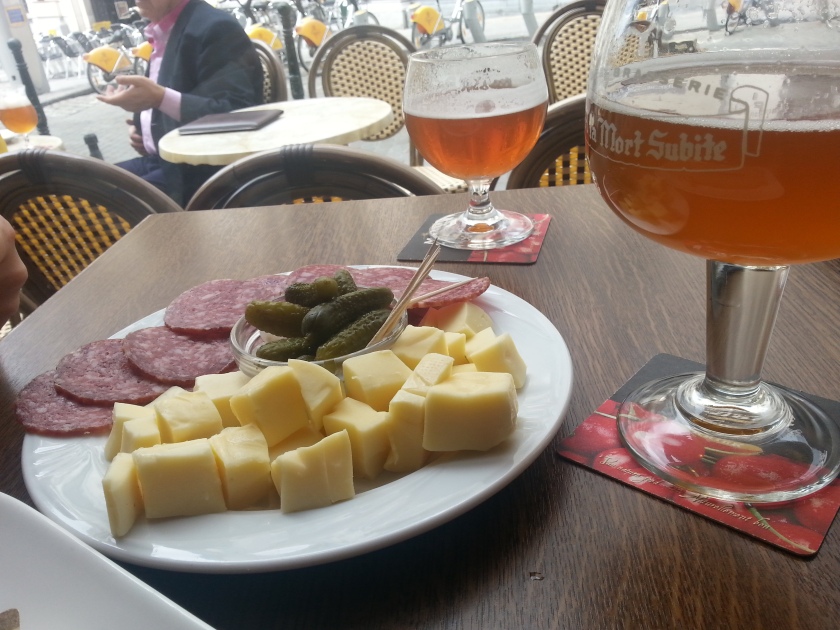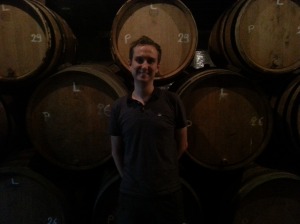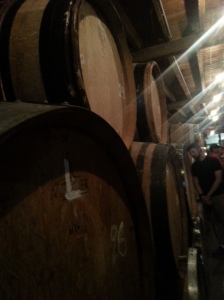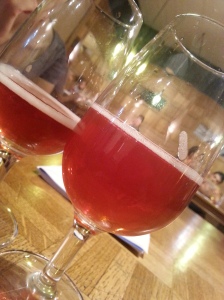
At the European Beer Bloggers & Writers Conference (EBBC) in Brussels today, glasses of gueuze, tripel and blond clink and gurgle as they are filled. Conversation rolls in waves, and each one covers the same issue: the Belgian Family Brewers (BFB) have announced a new campaign to define Belgian brewing as a family tradition on a par to those around the world. The campaign will include print and online advertising and in-trade events, seeking to educate consumers about just how seriously the profession of brewing is seen in Belgium, but also seeks to secure, in a roundabout way, a common understanding of what a ‘proper’ Belgian brewer is: one that is a BFB member – an historic, family-owned business.
Slides comparing brewing in Belgium to salsa dancing in Cuba, rodeo in the United States, bullfighting in Spain and even the Carnival dancers of Brazil reveal a slightly limited, awkward and stereotypical worldview, but the intention is clear. It’s a single-minded campaign, trying to show the heart and soul in Belgian brewing in way the country has not seen before, but one that raises many questions about the BFB’s long-term intentions.
So what is the BFB and how is this a change from its current campaigning? The BFB is a non-profit organisation and represents 22 Belgian, family-owned breweries and has existed since 2007, created with the aim of ‘passing on knowledge’, in real terms protecting the status of its members and marketing their credibility to consumers (in a way not dissimilar to the Authentic Trappist Product stamp on Trappist brewery beers). Most crucially, its members must have brewed beer in Belgium for at least 50 years.
This time criteria fascinates me, and it sets the BFB apart from many other such organisations of which I’m aware. The aim to preserve heritage has been made abundantly clear to EBBC attendees, but like any brewery in the past 20 years, many of them have adopted a number of recent fashionable styles and methods to benefit from the increased interest from consumers in speciality beer styles. Much of this heritage, whilst thought be many hundreds of years old, is often based on styles from the 20th century at the earliest. ‘Authenticity’ is another term which they are defining with their own set of criteria – unsurprisingly they choose that it means a family business owning its own brewery.
The conference has seen the BFB set its own narrative; explain in unmistakeable terms that it is the champion of ‘proper’ Belgian beer. The curiously grandiose phrase ‘Heritage Guardians’ has been injected quite deliberately into panel discussions, presentations and beer tastings. The phrase reminds me, in a strange sort of way, of something BrewDog might announce if was a 7th generation blond and oud bruin brewer. There can be no doubt that we have been carefully warmed up for this announcement: a smattering of words such as ‘preservation’, ‘innovation’, ‘passion’ and – inevitably – ‘craft’, have been deployed with press-release-like precision, put into the mouths of commercial directors and brewmasters with rehearsed annunciation and repetition.
Of course, as the leading Belgian organisation representing beer that bloggers would likely be interested in, the BFB’s headline sponsorship of the EBBC in Brussels is far from surprising. A representative attended last year’s conference in Dublin with the express intention of gauging the likelihood of 2015’s taking place in Brussels. But more interestingly, the BFB has timed its press conference for the conference attendees arrival. An obvious choice if they wish to best communicate their message, undoubtedly, but the events taking place throughout the conference have been designed to help convince attendees of the BFB member breweries’ artisan and craft credentials. The almost breathless pace of the conference so far has astonished many attendees, but also hinted at an agenda to represent the maximum number of BFB members and their beers in a shortest possible time for a specific reason; to make a specific case in time for the announcement of its new campaign.
Has the case been made successfully? My own personal understanding of the organisation and the Belgian beer industry has been greatly expanded, but the more I have learned, the more questions I have. There’s definitely a sense of banding together to preserve heritage, a laudable aim, but also a feeling that these are proud, inflexible dynasties clinging on to businesses that stretch back hundreds of years. They have every right to preserve what they have built, and they seem to feel they are being open by showing us their beers and their brewmasters, but there’s a clear discomfort about the growing popularity of brewers in Belgium who are not BFB members. ‘Gypsy’ or cuckoo brewers who contract brew on other brewers’ equipment, and those who make great beer but lack the 50-year-heritage to be members, are starting to gain acclaim, and are benefiting at home and overseas from the credentials and reputation of being Belgian.
This clearly riles the BFB, and this new campaign to enforce the ‘family tradition’ message may be the beginnings of a longer-term strategy to preserve their place among self-consciously ‘craft brewers’ in Belgium.
The pride in its achievements – and fear of being forgotten – motivating this organisation is a curious thing to observe and understand. BFBF members delight in reeling off the awards and history of one of their beers, but they clearly struggle to see how they fit into what is currently happening in the world of beer. If the BFB wants to convince the world that their version of Belgian brewing culture is primary, they must learn that traditions do not simply spring out of the ground. They are grown, and acting more inclusively towards newer brewers is an absolute must if they wish to be taken seriously, and if they wish for their traditions to survive, and thrive in the future.









